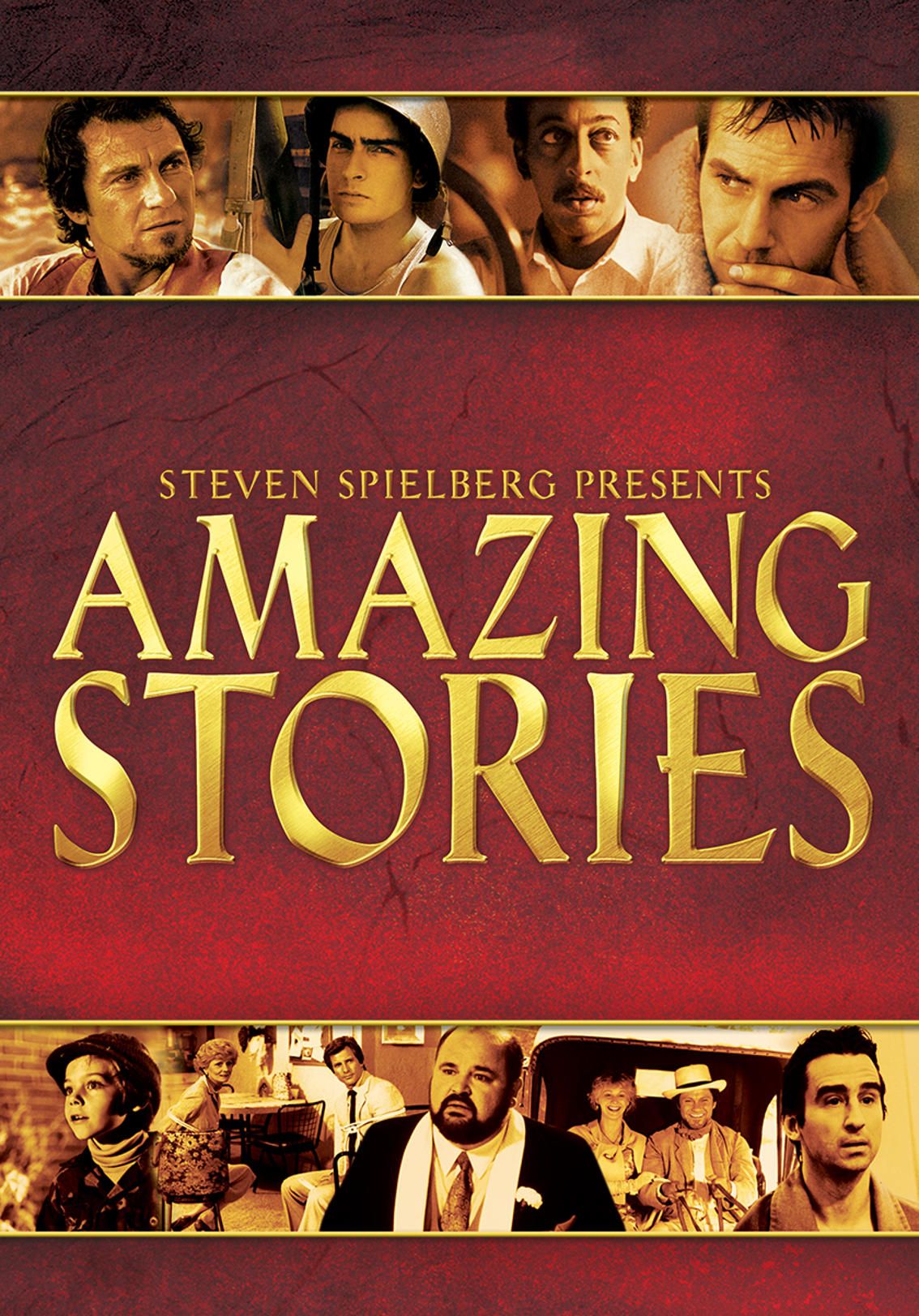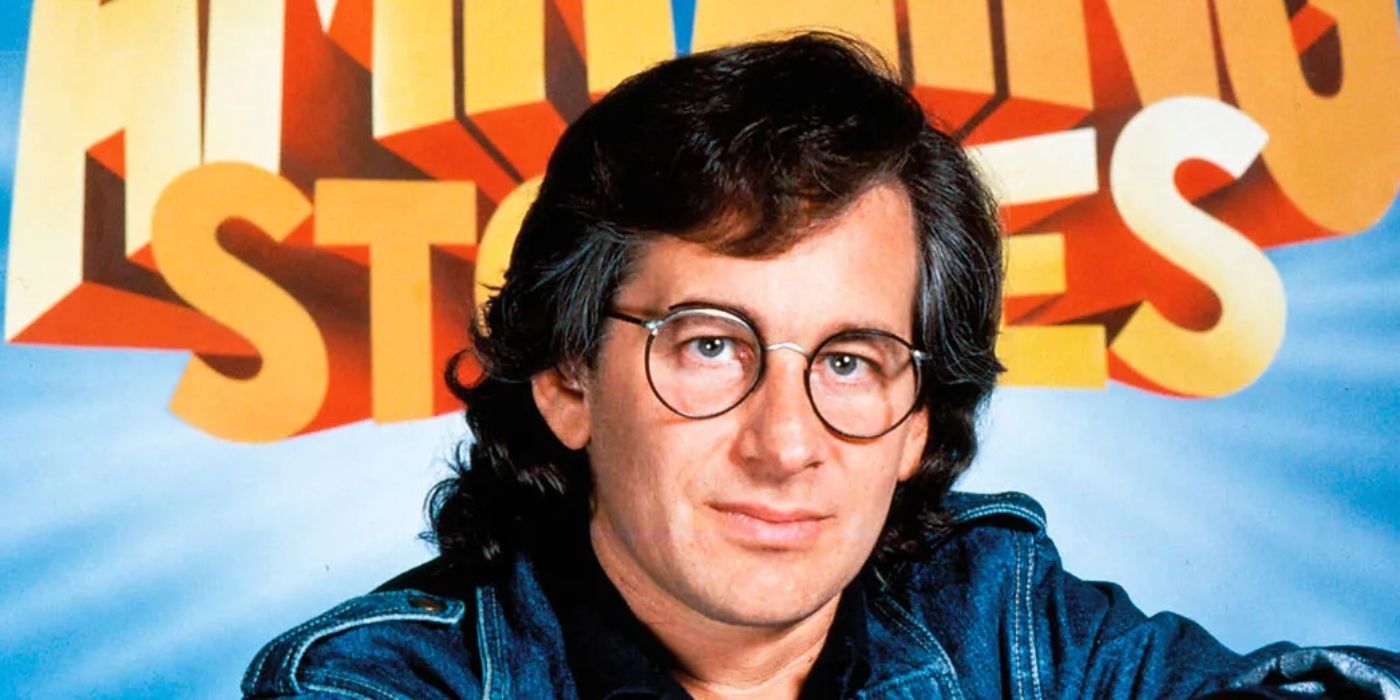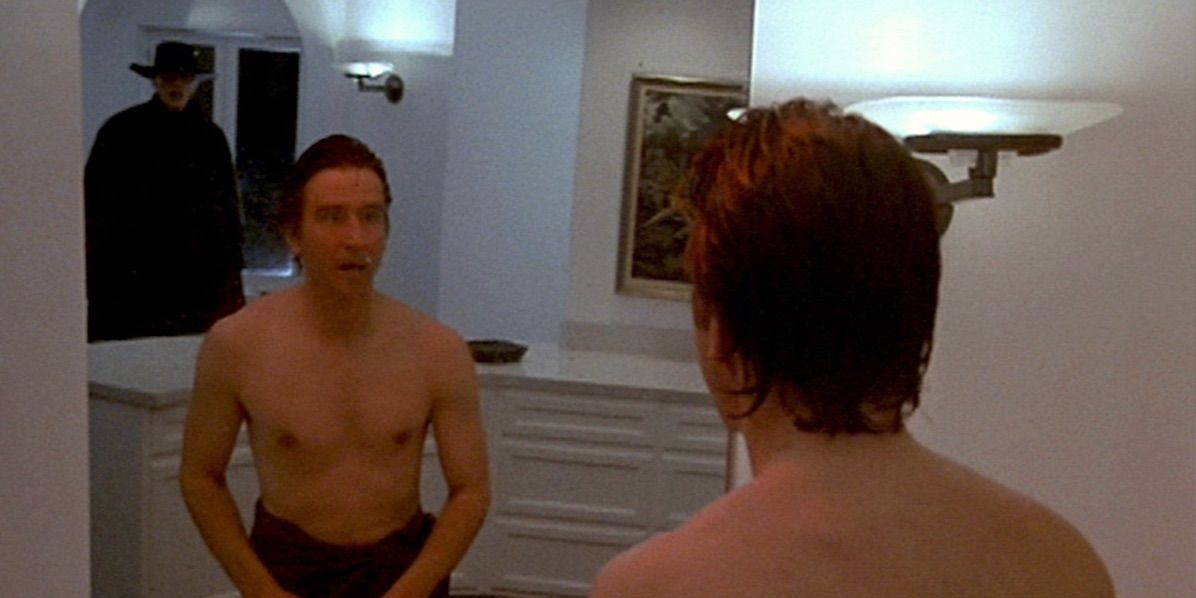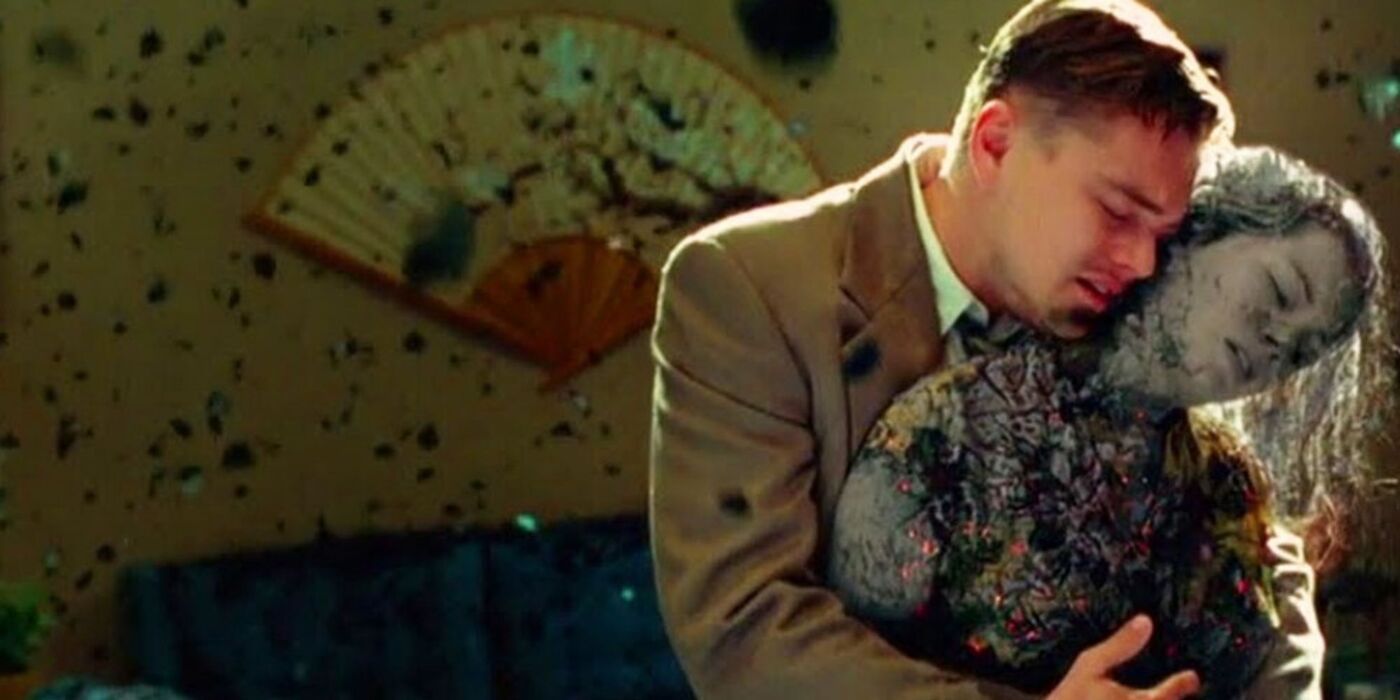Scorsese's Terrifying Addition to Spielberg's Iconic TV Anthology
Martin Scorsese brings his signature style to Spielberg's TV anthology, 'Amazing Stories' In his horror episode, 'Mirror, Mirror', Scorsese showcases his mastery of diverse genres, proving that even Spielberg couldn't hold him back!
Article Summary
Martin Scorsese's episode of Amazing Stories, "Mirror, Mirror," stands out as one of the few horror stories he tackled in his career.
The episode revolves around a renowned horror writer who is tormented by an eerie apparition in his reflection. However, the storyline lacks originality and fails to leave a lasting impression in terms of horror elements.
Due to the constraints imposed by Amazing Stories' predetermined style, Scorsese's creative flair is somewhat restricted in this particular episode. Nevertheless, it remains enjoyable to witness his collaboration with Spielberg.
Killers of the Flower Moon may be the current talk of the town, but Martin Scorsese's career has had its quieter moments as well. In addition to his renowned films like Who's That Knocking at My Door and the innovative Rolling Stones project Shine a Light, Scorsese has also dabbled in television, albeit sparingly. One of the more obscure series he has worked on is Steven Spielberg's Amazing Stories, an anthology show that brought together some of the most popular directors of the '70s and '80s. Heavyweights like Robert Zemeckis, Joe Dante, Tobe Hooper, and even Clint Eastwood were involved in the project! Despite its significance during its original airing, Amazing Stories has largely faded into obscurity today.
Scorsese's contribution to Amazing Stories consisted of just one episode: Season 1, Episode 19, titled "Mirror, Mirror." While the episode's story was conceived by Spielberg himself, the final screenplay credit was attributed to Joseph Minion. Interestingly, "Mirror, Mirror" stands as one of the few horror stories in Scorsese's filmography, with Cape Fear and Shutter Island being his only other ventures into the genre. The episode also stands out within the broader context of Amazing Stories, as most installments revolve around drama or fantasy narratives. Scorsese's episode tells the tale of a renowned horror author (played by Sam Waterston) who finds himself tormented by a sinister figure (portrayed by Tim Robbins) in his mirror. It's a fairly generic horror story, lacking the distinct Scorsese touches and ending on a rather subdued note that fails to leave a lasting impact. However, this is not entirely the filmmaker's fault. Upon viewing multiple episodes, one will notice that Amazing Stories adheres to a strict in-house style for its artists. Nonetheless, occasional glimpses of Scorsese's brilliance can still be found, albeit few and far between.
Captivating Tales: Incredible Stories from 1985
Prepare to be mesmerized as you delve into a world of unimaginable wonders and unexpected twists. These remarkable stories are a perfect blend of fantasy, humor, and peculiarity, and may even send shivers down your spine or melt your heart. Joining the ensemble are numerous renowned actors, actresses, and directors who make special appearances, adding a touch of star-studded brilliance.
Martin Scorsese Was an Odd Fit for Steven Spielberg's TV Series, 'Amazing Stories'
Release Date: September 29, 1985
Cast: Charles Durning, Kevin Costner, John Lithgow, Sam Waterston
Genres: Anthology, Fantasy, Science Fiction
Rating: PG
Creator: Steven Spielberg
Developer: Steven Spielberg, Joshua Brand, John Falsey
Distributor: Amblin Entertainment, Universal Television
Image via NBC
The combination of supernatural horror, the Amblin tone, and Martin Scorsese may seem unlikely, considering the distinct characteristics associated with each. Supernatural horror delves into eerie apparitions, otherworldly occurrences, and unexplainable phenomena within the genre. Meanwhile, Amblin Entertainment, Steven Spielberg's renowned production company, has delivered beloved films that have resonated with audiences. From classic Spielberg creations such as E.T. the Extra-Terrestrial, Close Encounters of the Third Kind, The Goonies, to Gremlins, Amblin has consistently delivered cinematic gems. Despite his diverse filmography today, at the time of airing Amazing Stories, Amblin hadn't yet showcased its full range and depth.
Then there's Scorsese, who had not yet ventured into the realm of horror or directed anything similar to an Amblin film when "Mirror, Mirror" first aired in March of 1986. While Alice Doesn't Live Here Anymore had elements of Spielberg-ian Americana, that was about the extent of it. This is the same director known for gritty and cynical movies like Taxi Driver, Mean Streets, Raging Bull, and The King of Comedy. He was even preparing to shoot The Last Temptation of Christ, known for its dark portrayal of Jesus Christ, which ended up causing controversy and even leading to the burning down of certain theaters.
So, it would be unlikely to expect Scorsese, known for his intense films, to join the ranks of Steven Spielberg and Robert Zemeckis on an anthology show. However, if Tobe Hooper managed to do it, maybe Scorsese could surprise us too. It's not to say that Scorsese is not on the same level as those directors mentioned before (he might actually be the greatest living director), but in terms of tone and standards for this show, he would be an unconventional choice. If Scorsese were to make an episode for Amazing Stories, it would likely be in the horror genre. After all, this does not feel like the right type of story for Scorsese, who usually collaborates with writer Paul Schrader.
Martin Scorsese Tackles Horror in His 'Amazing Stories' Episode "Mirror, Mirror"
Image via NBC
This episode of Amazing Stories is an anomaly in Scorsese's otherwise impressive filmography. Titled "Mirror, Mirror," it essentially serves as a 24-minute campfire tale. The story starts with Jordan Manmouth, a renowned horror author, being interviewed on The Dick Cavett Show (featuring the actual Dick Cavett as himself). Later, when he returns home, Manmouth dismisses a child who had come to share their own writing with him. While he appeared amiable during the interview, his treatment of the child reveals his true nature. As night falls, Manmouth begins to glimpse a decrepit and eerie figure in his mirror. The figure slowly approaches the author each time he turns away, only to vanish when he glances back. However, with every reflection, the figure draws nearer.
Each sighting of the figure causes Manmouth to panic, leading to a gradual decline in his mental state. Eventually, the figure catches up to him and starts to strangle him from behind. This development aligns with the expected outcome of a menacing figure fixated on Manmouth's neck, so the episode initially follows a predictable path. However, the story takes a bizarre turn when one shot shows Manmouth struggling, then the camera shifts to his girlfriend, and when it returns to him, he suddenly appears horrifically disfigured, resembling the figure in the mirror. He rises from his seat and flings himself out of the window, putting an end to his suffering. This sudden disfigurement feels incredibly random and lacks justification. Manmouth was being choked, not slashed and mutilated! Given that the episode already lacked considerable tension, this twist elicits a momentary chuckle before fading from memory. It falls short of being the best installment.
The ending of "Mirror, Mirror" in Amazing Stories, while disjointed, cannot be entirely blamed on Scorsese. Compared to contemporary anthology shows like Tales from the Darkside or Tales from the Crypt, Amazing Stories falls short in terms of both the overall strength of its weekly episodes and the level of horror presented in "Mirror, Mirror." However, it is not too far behind. "Mirror, Mirror" does possess that nostalgic 80s made-for-TV horror vibe that many others had during that time, albeit being confined within the limitations of a cheesy series. Although it may not be a terrifying experience, watching the episode can still be enjoyable and entertaining.
Spielberg's 'Amazing Stories' Rarely Let Its Directors Exercise Their Styles
Regrettably, as an eager viewer hoping to witness Scorsese's distinct style in a 24-minute horror anthology, this particular episode falls short in that regard. Overall, it resembles most other releases of Amazing Stories. While it doesn't possess the bland cinematography of a sitcom, it also fails to truly highlight the talents of its filmmakers. Scorsese only has a brief moment to showcase his creativity as Manmouth secures his house – a moment captured through quick cuts and a frenetic pace. "Mirror, Mirror" briefly captures the iconic Thelma Schoonmaker editing style that we all adore.
However, this moment is fleeting. On the whole, this episode feels no different from stories directed by numerous other filmmakers for horror anthology TV shows. Without the opening credit revealing Scorsese as the director, one would be hard-pressed to guess. It lacks distinct style and fails to deliver much in terms of fear. Yet, it does bear resemblance to the classic shows Tales from the Crypt and Tales from the Darkside, which is at least a comforting factor. Who doesn't enjoy those shows? Perhaps Scorsese simply wanted to collaborate with his friend Steven Spielberg (and make a quick profit), and who could blame him?
Martin Scorsese Is a Master of Many Genres, Including Horror
Image via Paramount Pictures
Scorsese is known for his mastery across various genres, including horror. Cape Fear toggles between horror and thriller, but remains terrifying. Shutter Island, although not inherently supernatural or gothic, draws inspiration from pre-70s horror films. While Scorsese doesn't often choose to delve into scary territory, he has the potential to do so exceptionally well. Although "Mirror, Mirror" was limited by the constraints of 1980s TV and the nature of Amazing Stories, it's still interesting to note Scorsese's collaboration with Spielberg. Thankfully, we now have the opportunity to witness Scorsese's true capabilities in horror and continue to enjoy his new releases.
Editor's P/S
As a Gen Z fan, I have mixed feelings about Martin Scorsese's episode of Amazing Stories. On the one hand, I appreciate the fact that he was willing to step outside of his comfort zone and try his hand at a horror story. On the other hand, I found the episode to be somewhat lacking in originality and suspense.
I think the biggest problem with "Mirror, Mirror" is that it simply isn't very scary. The story is predictable, and the scares are more cheap jump scares than anything truly unsettling. I also found the characters to be somewhat one-dimensional and uninteresting. I never really felt invested in their plight, and as a result, I didn't really care what happened to them.
That said, I did appreciate the episode's visuals. Scorsese is a master filmmaker, and his eye for detail is on full display in "Mirror, Mirror." The cinematography is beautiful, and the use of lighting and shadow is particularly effective in creating a sense of atmosphere.
Overall, I would say that "Mirror, Mirror" is a well-made episode of television, but it's not one of Scorsese's best works. It's worth watching for fans of the director, but it's not likely to leave a lasting impression.










